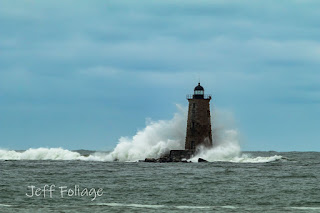The Old Round Church is in Richmond Vermont.
Years ago I saw an image of the Old Round Church in Yankee Magazine. The image was similar to the one on this page and I wanted to create my own version of it.
A study in perseverance
This is a study in perseverance, as I have been going up to Vermont for almost 10 years now. Each December we go up for our Grandaughters birthday and then again just after Christmas.
It's all about timing. Just like the stock market is tough to time (buy LOW sell HIGH), finding a fresh snow scene with the candles lit and not a ton of people in my shot. Some years I had no snow and some years the candles were not lit. Some years I even had rain.
2013 the pieces fall into place
Well 2013 was the year it all came together. Fresh snow, over about 1 inch of ice and the candles were lit! It was a cloudy day threatening more snow. Lisa sat in the car as I walked around taking in all the different angles.
Savoring the moment in my mind. As the light faded, this was becoming one of those very scarce moments where all the elements fell into place.
One thing that made this really special was that they had strung lights on a evergreen outside the church on the front green. Even this was lit up and glowing warmly in the fading light.
The image below is my favorite and I have it up on
Fine Art America in my Vermont Art gallery and you can look through all my artwork, if you are so minded.
Background
The Old Round church was built in 1812/13 and under the direction of craftsman William Rhodes. This 16 sided sixteen-sided polygon round church/meetinghouse was to be (and I find this amazing) a meeting hall and place of worship for five protestant denominations. (Baptists, Christians, Congregationalists, Methodists and Universalists)
Why 16 sides? Well there are no documents saying why the Old Round Church has 16 sides but the three claims on its origin are:
The first was that with no corners there was no place for the Devil to hide.
Someone postulated that Rhodes had 17 workers, one for each side and one for the belfry.
But the most viable answer is that Rhodes who grew up in Claremont New Hampshire, modeled this one on the octagonal church in his hometown.
Within a few decades the different denominations began to move out and establish their own churches. The Old Round Church reverted to the control of the town. It was used as the town’s Meeting hall until 1973 when it was closed due to safety concerns.
Present Day
The Old Round Church of Richmond Vermont is open for tours by visitors from late May to late in the fall foliage season, Along with Weddings and group tours. Visit The Old Round Church website [
http://www.oldroundchurch.com/index.php/home] for more information and the history of this landmark of Richmond Vermont.


















